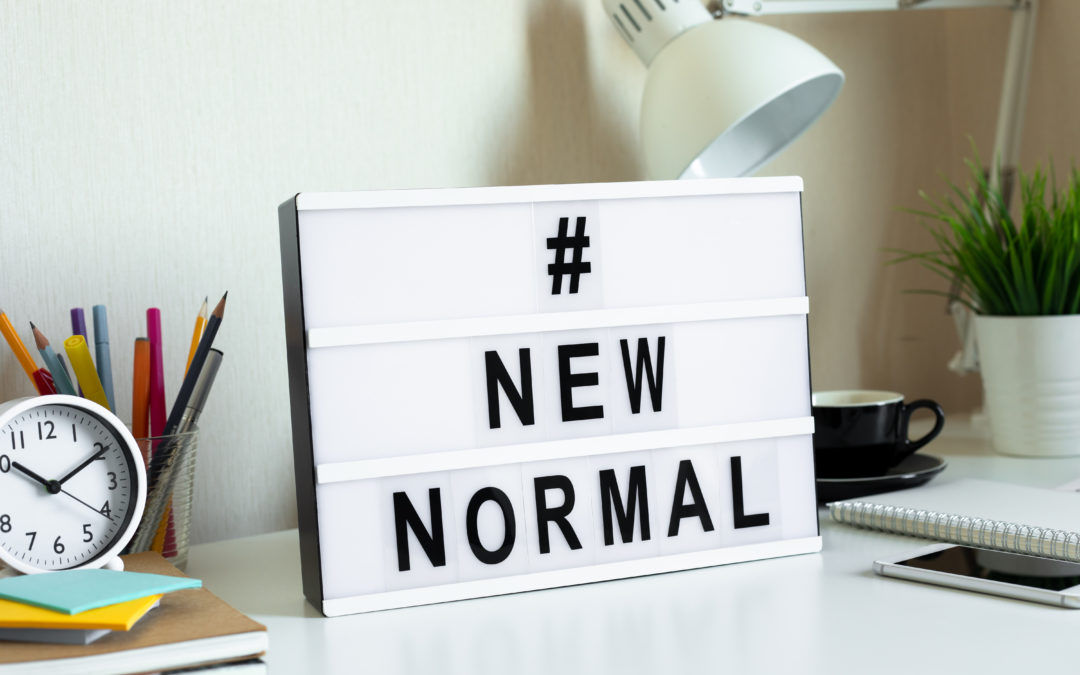Moving to Work-From-Home
About a year ago, our collective world was turned upside down by COVID-19. Millions of Americans lost their jobs, hundreds of thousands lost their lives, and nearly everyone experienced a loss of a way of life.
At Everest Customer Solutions, we are extremely grateful for the position we were in when the lockdowns began last March. As a primarily technology-based business, we were able to move our entire workforce remote. We set our employees up with the equipment they needed to create home offices, including webcams, laptops, monitors, and even some new desk chairs. Our employees all have access to reliable internet, enabling us to continue to work with our customers around the country and engage with our own workforce here and abroad.
Throughout this experience of working from home, we have all learned a lot. We’ve found things that worked, things that really didn’t, and we’re excited to share what we’ve learned along the way.
Not all virtual meeting platforms are created equal
Virtual meetings obviously aren’t new. We’ve all used virtual meeting platforms before, but we never had to use them so frequently that we could rank them and produce lengthy pro/con lists about each one. COVID-era life has taught us that they are definitely not created equal. Here’s a list of our somewhat biased rankings:
- Webex – No. Just no.
- Teams – It’s not the worst, but it’s not the best. It can be difficult to navigate the settings, and we found that Teams would often choose which microphone or camera to use for a meeting at random, leading to some unflattering video angles and lost meeting time as everyone struggled to set up the correct microphones and cameras.
- GoToMeeting – To be honest, we kind of forget this one exists. It’s super simple to use because it’s browser-based and no one needs to download software, but we don’t see GoToMeetings that often.
- Zoom – Probably our favorite. The video quality is good, filters and backgrounds are simple to set up, it’s easy to schedule meetings, and the free version is just as useful as the paid version – as long as you can keep your meeting on task.
- Slack – Our favorite for intra-team calls. We use Slack for instant messaging, but when that’s not enough and we’d rather talk through a problem, it’s easy to just click and call. It’s also easy to add a team member to a call mid-stream without missing a beat. Plus, we can use the screen-sharing feature to help walk through issues and explanations together.
Do you agree with our assessment? Let us know.
The benefits and drawbacks of instant communication
Email changed the game for business in the 80s, allowing faster and easier remote communication. Instant messaging platforms like Slack, Microsoft Teams, Google Hangout, and more, allow us to go beyond the speed of email.
This is obviously extremely helpful in the context of the work-from-home environment. We can talk to our teammates nearly in real-time, answer questions from anywhere, and collaborate quickly and effectively. It goes a long way to help maintain the social connections between coworkers too. Gone are the days of chatting around the coffee maker or across cubicles. Instead, it’s all emojis and side comments during Zoom calls.
However, we’ve noticed some downsides associated with such instant communication. With the power to respond to someone’s questions in a heartbeat, we’ve found ourselves feeling guilty when we are busy and take more than 14 seconds to reply to an IM.

A slippery slope
Because of the ubiquity of technology and device fluidity in our work lives, it’s always been a little difficult to avoid bringing your work home with you. But what about when your bedroom and your office are one and the same?
In our technology-driven world, no one goes anywhere without their phones. We’re always work-ready. We’re answering Slacks and emails from the sidelines of our kid’s lacrosse game, from the chair at the salon, from the grocery store, and even from bed. Work-life balance? Don’t know her.
We’ve all been there: you work until dinner time, eat, pour yourself a glass of wine. Just as you’re about to settle down on the couch to relax, you think, “Could I be doing something productive right now?” Before you know it, you’re getting ahead on next week’s report, editing a slide deck for tomorrow’s meeting, and responding to emails you’ve been meaning to get to.
The lack of a commute and the readily available coffee at home can make you feel like you’re more productive than ever. But with the lines blurred between home life and work life, it can be difficult to disconnect at the end of the day or on weekends. It’s a slippery slope from productivity to overworking and the burnout that comes with it.
Take it from us—when you are starting to feel so consumed by work that your dog feels more like a coworker, it’s time to log off and go for a walk.
Look good, feel good
When working from home, it can be easy to treat every day like casual Friday. Who’s going to know if you’re wearing pajama pants?
We’ve found that while it’s nice to be comfy, what you wear affects how you carry yourself. When you’ve made even a small effort to look good, like putting on a clean shirt, brushing your hair, or god forbid, putting on jeans, you trick yourself into thinking you’re a functional member of society and then act like one at work. You get more done, speak a little clearer in meetings, and you’re the brave soul who isn’t afraid to turn on your camera during meetings.
Plus, it can make disconnecting from work easier. Putting on sweatpants again = done for the day.
Backgrounds are the new Funky Shirt
We’ve also found that in this new remote working environment, new forms of self-expression have sprung up. There’s always been fashion. We’ve seen plenty of funky shirts, new hairstyles, interesting jewelry, and cool glasses frames on our Zoom calls.
But a new form of expression we’ve noticed is backgrounds, both real and virtual. Some people take a lot of care in curating which book spines are visible on the shelf behind them or positioning themselves in front of windows with a view of their manicured gardens. Others prefer the more neutral background of nondescript white walls that says, “What I have to say is more important than what my walls say about me.”
Many video conferencing platforms allow you to use a virtual background.
Here are a few types we’ve seen and what we think they say about the user:
The blurred– Cue Ariana Grande’s “Focus.” The person who uses a blurred background is probably at the center of the meeting. And they want you to be constantly guessing where exactly they are. (They’re probably inside of a closet.)
The alternative office– These users have serious wanderlust in this pandemic. They want to be anywhere other than their office right now – even if it’s another office, a library, or a coffee shop.
The company logo– The office cheerleader! They love what they do and who they work for and want the whole world to know. But since screaming it from the rooftops may not be COVID-friendly, they’ll stick to using the company logo as their Zoom background.
The beautiful landscape photograph– Ah, what a beautiful sunset. They’re hoping you’ll comment on how nice the picture is so they can tell you they took it themselves and derail the meeting with a story about their trip to Maine before lockdown.
The TV show or movie set– Our Netflix bingers of the business world show their personality by placing themselves on the set of shows like Schitt’s Creek or Friends. It’s both a way to let you know what their current binge is and to give them the opportunity to live out their dream of being served by Ted Danson’s character in Cheers or hanging out in the ER with Meredith Grey.
Let us know what your background personality is.
Need a new background? Find some cool Zoom backgrounds here!
Connection beyond Wi-fi
We’ve learned in this past year just how much we value our relationships with our coworkers. These are the people we were used to seeing every day! With lockdown in effect, we found ourselves disconnected from each other. Our usual serendipitous social encounters – chatting around the coffee maker, eating lunch, walking to the parking lot together – weren’t so easy to manufacture in a remote environment.
To remedy the situation, we started holding a daily team huddle. Every morning, we all joined a Zoom call. Work topics might come up, but they were meant to be a space to chat over morning coffee.
Another company favorite is virtual happy hours. We plan a Zoom call on a Thursday evening, and all have a drink together like it’s 2019. Sometimes we have a theme, like ugly Christmas sweaters or Halloween costumes. Other times we would come prepared with a question for everyone, like “Where will you go first once the travel restrictions are lifted?” or “What is one thing you accomplished this week?” We feel these happy hours have gone a long way towards making our team feel more connected while working remotely.
Looking forward
As we enter another year working from home, we hope to take what we’ve learned with us. For us, that means to remember how lucky we are to have been able to transition so easily to working from home and protect our employees in the process. It means recognizing how much we relied on our coworkers before and how much we took those moments at the coffee maker and cross-cubicle chats for granted. It means continuing to do our part to get to a new normal where community, connection, and kindness stay our priorities in and out of the office.
Click here to learn more about what we’ve been up to for the past year.







